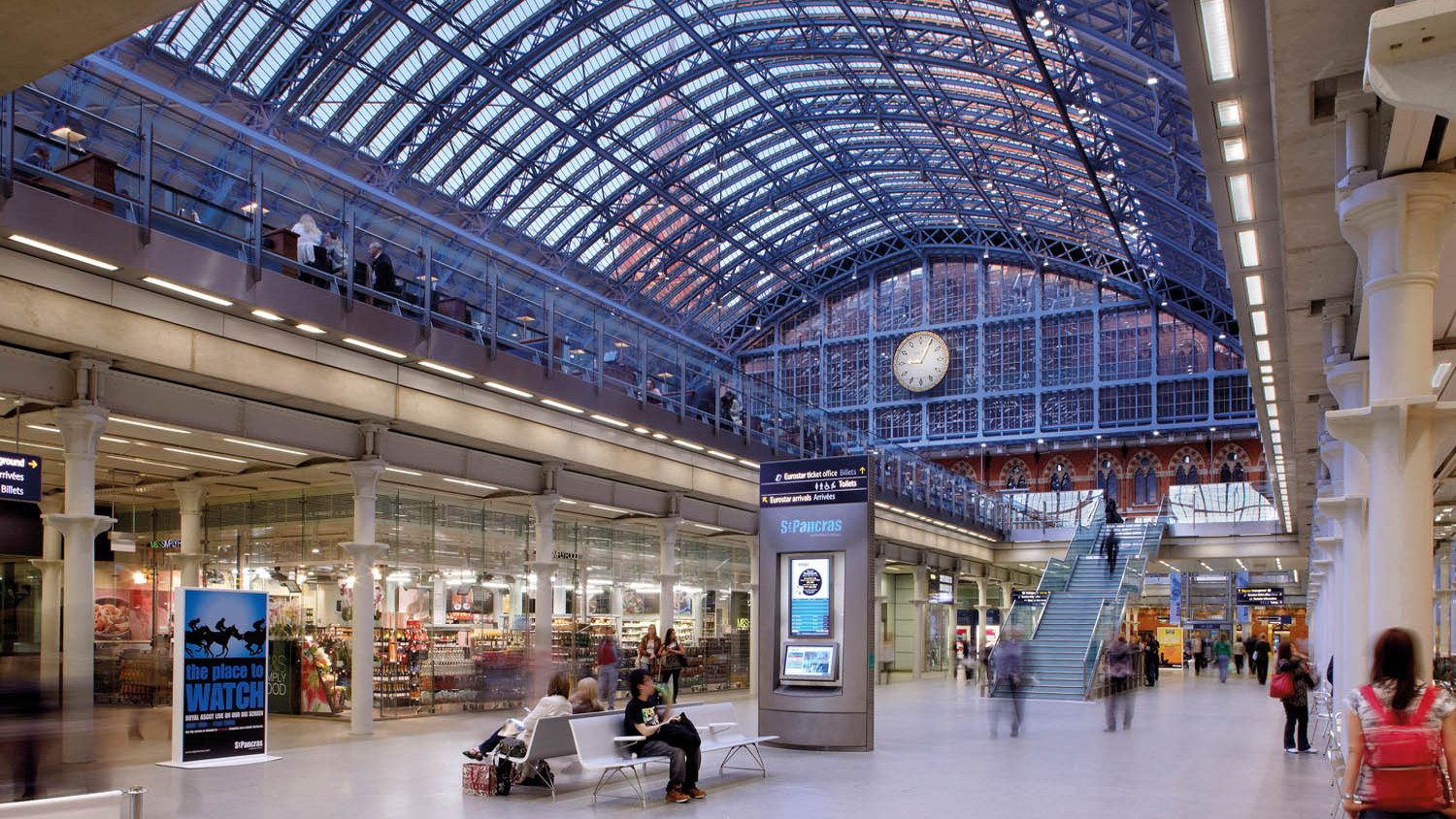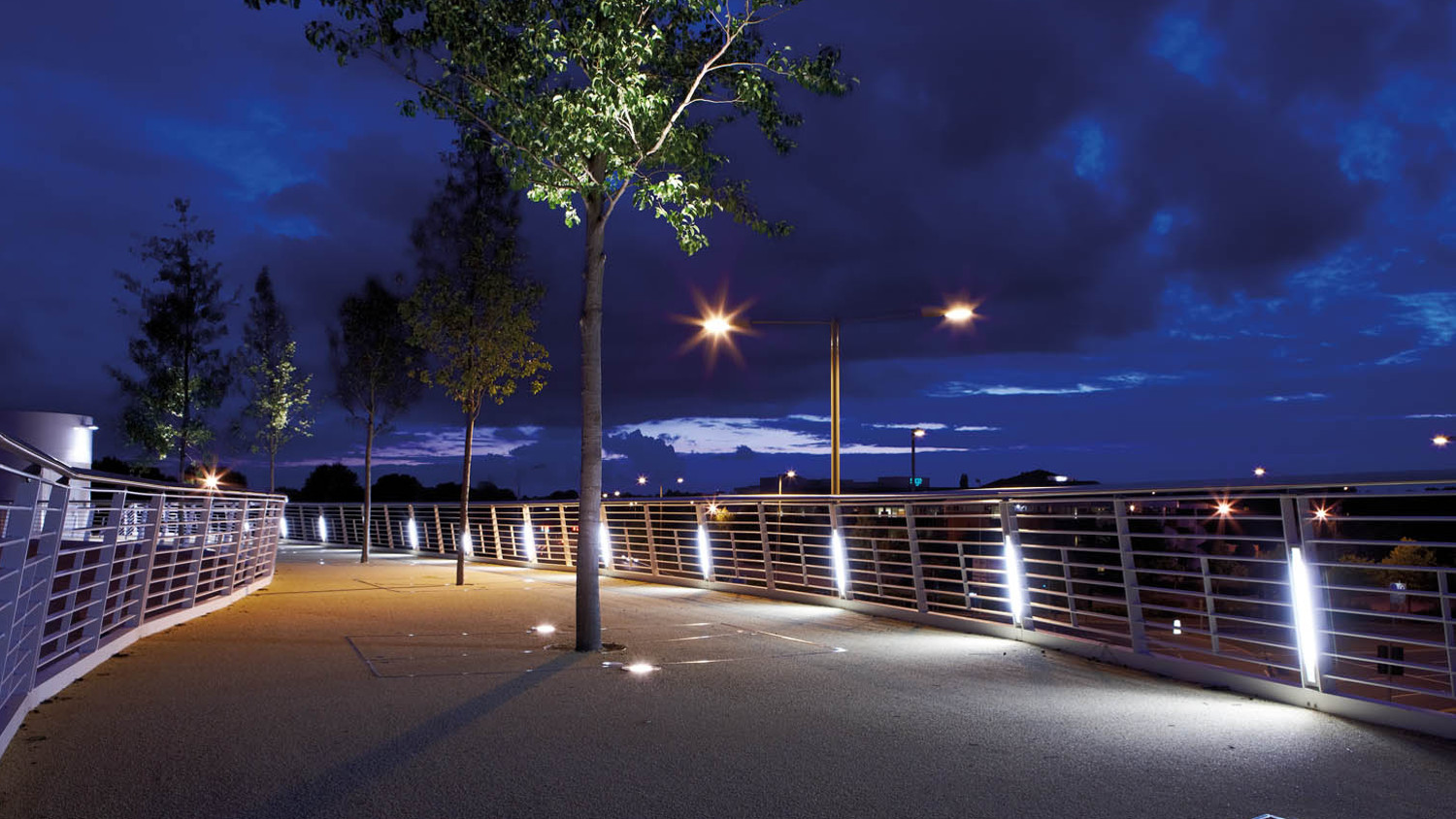At Designplan Lighting, a move to Solid Edge is helping the company to deliver on its durability promise across a wide range of products
As well as normal wear and tear, electrical equipment sometimes needs to be able to withstand extreme conditions or even deliberate attack. For half a century, London-based Designplan Lighting, part of the Fagerhult Group, has been making weather- and vandal-resistant luminaires with tough bodies, tightly sealed diffusers and tamper-proof screws.
The company’s extrastrong light fittings can be found in airports, train stations, secure health care units and on housing estates.
Specialist products are available for specific situations, such as custodial settings, where care must be taken to prevent harm through the design of smooth, rounded surfaces that prevent a ligature from being attached. In underground railway systems, lighting units must also incorporate anti-fire and anti-smoke features.
A pioneer in LED (light-emitting diode) lighting, Designplan’s comprehensive portfolio includes an extensive range of energy-efficient fittings that are environmentally friendly and low maintenance. Above all, they are durable.
One indicator of durability is the level of protection against mechanical impact; in Europe, this is measured via impact protection (IK) ratings.
For lighting products, the standard requirement is a rating of 10 IK, which protects against an impact of 20 joules, or 5 kilograms being dropped from a height of 40 centimetres. Designplan’s most robust products are rated much higher, at 16 IK, which protects against impact of 150 Joules, or 10kg being dropped from a height of 1.5 metres.
Designplan – customisation requirements
Designplan makes both standard and customised lighting products, and it was the particular challenge of making customised products that led the company to review its use of technology in the development process.
Tony Croke, design team manager, explains: “Over the years, the company had acquired multiple CAD platforms, so when we had to quote for a new product, we faced a whole series of questions. Which existing model was closest to what was required? Which package had it been designed in? And who was most familiar with that software? Our vision was to consolidate on one package and improve our efficiency.”
A demonstration from Siemens Digital Industries Software solution partner OnePLM convinced the Designplan team that Solid Edge with synchronous technology was the way forward.
“It was clear that if we created a master model for each product, we could use synchronous technology to modify attributes such as height and length easily and quickly,” Croke says.
Solid Edge was implemented early in 2016 and rolled out to nine design engineers, who each received tailored indepth training from PCE and from Siemens.
Designplan immediately established a project to create a consistent, modifiable master model for every product in the company’s existing catalogue. The major product elements are body, gear tray and lamp with diffuser and frame or LED.
Each standard item comes with a large matrix of options and variations: three different lengths, and six or seven versions such as flat or angled, plus the extra specifications necessary for underground locations. Any potential customisations are in addition to these. Designplan therefore began by targeting its most popular lines.

User response
“I find Solid Edge very intuitive to learn and it gives us better tools,” says Amy Deeprose, design engineer at Designplan. “Solid Edge also has a lot of features that are extremely helpful – for example, the ability to pattern a feature.”
Playback is particularly useful, she adds. “If I go away from a project and return to it later, it’s really easy to see the steps I took before and continue without losing any time. I can also share this feature with colleagues to demonstrate how to do something. There is much assistance available from the wider Solid Edge community and I often obtain information from online resources.”
John Hough, bespoke design engineer at Designplan, focuses on customised products. “I had worked for 25 years with CAD, but moving to Solid Edge opened my eyes to what is possible. I love synchronous. I find it very quick to manipulate an existing model in order to change a fitting, lengthen a luminaire, reposition a hole or amend a pitch. I am saving more than half the time I previously spent making changes at the part and assembly level.”
With Solid Edge, the Designplan team can easily access historical design data. “We can open up any file and work with it straight away,” Hough says. “Sheet metal is our bread and butter, as it is used for all bodies and for some fittings. We have several fittings designed on a platform that we used previously, and when we bring these files into Solid Edge, they are actually associative. We can even import drawings from a basic 2D package we use for the punch press.”

Designplan – streamlining quotes and designs
After six months, Designplan had created master models for three product sets and the team was reviewing customer requests and anticipating demand for different sizes.
Deeprose notes the benefits of the new approach: “In particular, synchronous technology allows us to work organically. We can explore options, because there is no sketch to build, as in an ordered modelling environment.
When we have a Solid Edge assembly, we can do model explosions and gain visual help to cross-reference quickly against the master BOM.”
All Solid Edge files are kept together in one folder as Designplan builds a library of master and variant components within product families.
The data management features of Solid Edge support basic workflows for file release, storage and retrieval.
“The way that we manage files within Solid Edge is a vast improvement over our previous system,” Deeprose says.
The team has also been creating building information modelling (BIM) files, in line with government legislation, she adds. “Solid Edge is fully compliant with BIM regulations and produces widely recognised standard BIM files. There is no extra step required. If a BIM file is requested at 8am, we can usually produce it by midday.”

Designplan – fulfilling the vision
The first products designed using Solid Edge went into production nine months after the software’s implementation.
“We can make an assembly much more intelligent; it is so easy to set up components and alter them as required,” says Deeprose. “Now that we have started to work from master models, any changes are taking minutes rather than hours.”
The ability to upgrade the technology within a product quickly and easily also makes a big contribution to its operating life, Hough adds.
“Local authorities are saving costs by replacing sodium lighting, and retrofitting LED elements into an existing fitting takes just a few minutes.”
According to Croke, there has been a huge opportunity to freshen up the company’s top revenue-producing products. “We will have addressed 90% of our best sellers within one year,” he notes.
“In addition, we have improved our products and reduced manufacturing errors. Production stoppages for bespoke products used to average between ten and 18 stoppages per week. Since we began to use Solid Edge, they have dropped to just four.”
The rollout of Solid Edge across the production facility also gives Designplan the opportunity to highlight established checklists that enable operators to provide feedback on procedures such as punching, folding, shaping, fitting and assembly.
There is also the option to use the simulation capability within Solid Edge to assess structural integrity. “We can cut further time in production if we identify any weak points through simulation,” explains Deeprose. “This is particularly important, as we have to physically prove the strength of our anti-vandal fittings.”
The business benefits of the new platform will continue to emerge as the design team implements various plans. Use of rendering is enabling sales and marketing images to be produced early in the design process for in-house knowledge, customer presentations and for use on the company website.
“Every time we get a job, whether it is standard, bespoke or retrofit, Solid Edge helps us to save time,” concludes Hough. “We used to complete an average of five bespoke fittings per week. We are now averaging 8 per week.”






